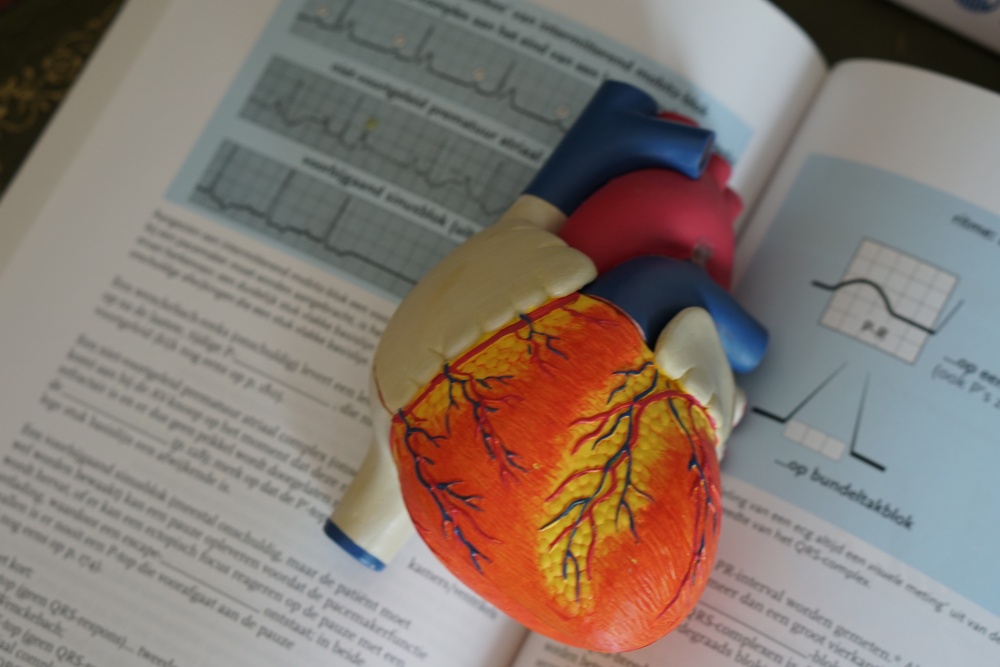THE HEART: HOW IT WORKS AND FACTS

The heart is a muscular organ that provides blood to your body. It is a finely tuned instrument. Our heart is located at left side of the chest. It consists of four chambers. The upper two chambers are called left and right atria. The lower two are called left and right ventricle. A tissue called septum separates the left and right chambers. The heart has four valves to ensure that blood only flows in one direction.
Aortic valve: Located between left ventricle and aorta
Mitral valve: Located between left atria and left ventricle
Tricupid valve: Located between right atria and right ventricle
Pulmonary valve: Located between right ventricle and pulmonary artery
When each chamber contracts, a valve opens to allow blood to flow out. When the chamber relaxes, the valve closes to prevent blood from leaking back into the chamber and to allow the chamber to fill with blood again.
The right side of the heart receives oxygen poor blood from your veins and pumps it to your lungs, where it receives oxygen and gets rid of carbon-dioxide. The left side of the heart receives oxygen rich blood from your lungs and pumps it through your arteries to the rest of your body.
The pumping of the heart is called heartbeat. The heart beats around 100 000 times a day, pumping approximately 8 pints of blood throughout the body. Your hearts electrical system controls the timing of the pump. When the electrical system is working properly it maintains a normal heart rate and rhythm. In general the heart rate is 70 beats at rest. The rate is increased temporarily during exercise, fever, emotional excitement and decreases during sleep.
The heart receives its own blood supply from coronary arteries. These are tiny arteries in 2-3 mm diameter. Like all other tissues in the body, the heart muscle needs oxygen rich blood to function properly. Failure to receive this nutrient causes a heart attack.

When we mention cardiovascular system disorders, we need to think about both the structural disorders in the heart and the vascular system disorders. We divide the vascular diseases into two main groups. The first group includes Arterial disorders, which are about the vessels stemming from our heart and carry the oxygenated blood. Whereas, the second group includes the disorders of the Veins, which are related to the vessels carrying the deoxygenated blood back to the heart.
Cardiovascular system disorders usually occurs depending on the narrowing (stenosis) inside our arteries. This narrowing disturbs the blood flow particularly to our heart, our brain and other organs, causing various disorders. These restrictions in our arteries often begin to develop at a young age and may deteriorate with the increasing age. This is called “atherosclerosis” or vessel stiffness. You can probably get to know about it when you have stroke or a heart attack.
There is not only a single reason to develop cardiovascular disorders. Most of the time, multiple reasons may emerge at the same time. You may have the chance to change some of these reasons, however, if you already got such as disease in your genes (hereditarily) in her words in your family history; then you are unlikely to change the possibility to develop such diseases. You cannot stop aging. In that case, you will have to try to eliminate other reasons you might change. Well then, what are those reasons you can possibly change;
- Smoking
- High cholesterol (Blood Fats/Lipids)
- High Blood Pressure (Hypertension)
- Diabetes
- Failing to do exercises
- Overweight (Obesity)
- Depression, Isolation in Social Life
Stay Healthy.
